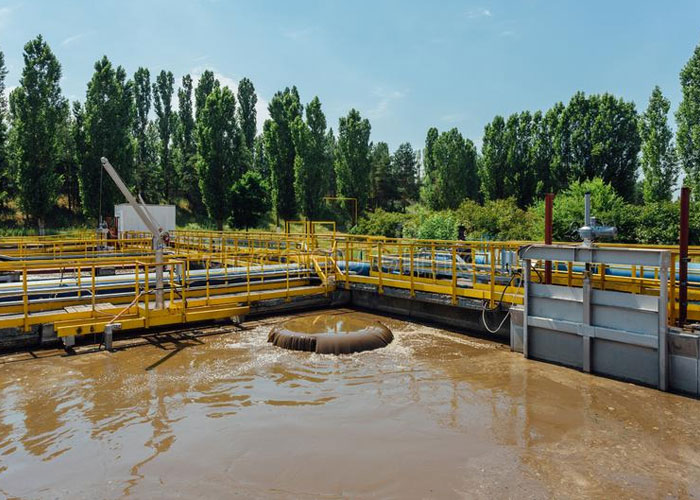There are many different types of wastewater treatment plants available. These include advanced oxidation, SBR, and Membrane filtration. Knowing which is right for your needs and your budget is important. Learn about the different wastewater treatment plants to determine which is right for you.
SBR
An SBR Wastewater Treatment Plant is an efficient way of treating wastewater with high turbidity and suspended solids. The process involves a biological process that controls the removal of organic matter and nutrients and the sedimentation of solids. The treated water is then discharged to the sewer, and the excess sludge is removed by pumping. The SBR process has many advantages, including high effluent and low suspended solids, requiring minimal space.
In an industrial sewage treatment plant, wastewater is treated using physical processes to separate solids from water. Water entering the plant is called influent and typically contains a variety of contaminants. Pretreatment techniques can include large bar screens for removing larger solids and equalization tanks to regulate water flow and promote settling. Grit chambers allow smaller particles to settle out. Depending on the wastewater type, additional pretreatment may be necessary. For example, wastewater containing high grease or fat may require skimming and blowers to separate froth.
The SBR process is highly effective at removing nitrogen from wastewater. The process works by regulating the dissolved oxygen concentration and the mixing conditions. The wastewater treatment plant can remove a large volume of nitrogen within a short period of time. Consequently, the effluent nitrogen concentration decreases.

The SBR process was developed to treat municipal wastewater. The process involves two stages: pre-anoxic denitrification and post-anoxic denitrification. The process was evaluated for its suitability as a decentralized wastewater treatment system and an alternative to conventional aeration processes. The process was also studied for its applicability for decentralized wastewater treatment in arid regions.
Activated sludge
-Sewage-Treatment-Plants-2.jpg)
An activated sludge treatment plant uses chemical and biological means to remove wastewater from a sewage system. The process requires a large amount of energy and constant monitoring of various appliances. It also requires extensive sewage channels and professional installation. In addition, activated sludge systems require high staff training and maintenance levels.
Activated sludge is essentially water and solids mixed. After treatment, the water contains a reduced BOD5 called treated water. Part of the activated sludge is mechanically recycled into the aeration tank.
Aeration is a method of treating wastewater by injecting oxygen into the return sludge stream. Oxygen is introduced into the sewage via a valve that controls the amount of oxygen. The sludge then flows into the clarifier tank. Once the sludge has settled, it is separated and reused.
The process relies on aerobic biological action to break down organic pollutants in wastewater. This means that the microorganisms in the wastewater use these organic compounds for growth. As a result, they break down the pollutant matter into water, CO2, and new cell material. The process also removes phosphorus and nitrogen from wastewater. However, it produces excess sludge that must be treated in a subsequent treatment chain. It is also not an ideal solution for small communities. It requires a high-tech centralized system that is not suited for rural and suburban settings.
Membrane filtration
Membrane filtration is a wastewater treatment technology that uses a filtration membrane to remove water pollutants. This process can be used for a variety of wastewater applications. Some applications include the treatment of textile effluent. Others have the recovery of high-quality water for reuse.
Membrane filtration works by removing particles from water, much like conventional sand and media filters. The water is forced through the membrane using a vacuum or pressure. During the filtration process, the water is separated into two parts, the permeate and the retentate. The treated water is then reused in the production industry or homes.
Microfiltration and ultrafiltration use membranes with pore sizes of 0.1 to 10 um. While neither of these filtration methods removes dissolved substances from wastewater, they can remove other contaminants. Activated carbon and iron salt are needed to remove these substances from the wastewater. Membrane filtration removes bacteria, viruses, and parasites.
Advanced oxidation process
An AO/RP is an alternative to traditional methods of wastewater treatment. This process uses an electrochemical reaction to break down organic and inorganic contaminants. The process requires a constant input of chemical reagents that produce hydroxyl radicals proportional to the concentration of pollutants. Many AOP techniques require the pretreatment of wastewater, which can be expensive and technically demanding. The process also needs to remove bicarbonate ions, which can reduce the concentration of *OH and yield less reactive species.
Advanced oxidation processes have a range of advantages over conventional processes. They can improve the BOD5/COD ratio and increase the oxygen content of effluents. Chemical oxidation processes are highly sensitive to the amount of oxidizable organic compounds in the wastewater, pH, redox potential, and the presence of toxic elements.
AOPs are particularly useful in removing micro-pollutants, which are not normally removed using conventional methods. The combination of UV irradiation and hydrogen peroxide (H2O2) has been found to result in better removal rates of a wider range of compounds than using either alone.







































Share Post